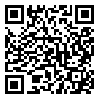BibTeX | RIS | EndNote | Medlars | ProCite | Reference Manager | RefWorks
Send citation to:
URL: http://sjsph.tums.ac.ir/article-1-5324-en.html
2- Ph.D. Educational Psychology, Virtual School, Tehran University of Medical Sciences, Tehran, Iran
3- Ph.D. Associate Professor, Department of Physical Education, School of Physical Education, Science and Research Branch, Islamic Azad University, Tehran, Iran ,
Background and Aim: Exercise is one of the major factors influencing health. Modern media such as the Internet can play an important role in shaping an individual’s attitude towards physical exercise and behavior. This study aimed to identify priority of factors influencing use of the Internet to expand physical exercise in a university environment.
Materials and Methods: A 23-item questionnaire (Cronbach’s alpha = 0.98) was designed to test the effect of virtual environment on expanding physical exercise among the university staff, faculty and students (Likert scale; 1, fully disagree to 5, fully agree). A sample of 500 individuals were selected by cluster-sampling and completed the questionnaire.
Results: The data showed that, based on the Friedman test, priority factors were not similar among the different categories of university audiences (p<0/001). While among the students and the staff the communication network factor ranked first, with an average rank of 3.56 and 3.46, respectively, among the faculty members it was information that ranked first, with an average rank of 3.64. Further analysis of the data showed a statistically significant difference among the three groups of university audiences – students, faculty and staff – as regards the total score of cyberspace application in university sport (F= 9.776, p < 0.05). There was no difference between the two genders. (t=0.78, p<0.5).
Conclusion: The findings show that the Internet can be quite effective in expanding university sport. It can provide an appropriate tool or substrate for expanding physical exercise/sport due to its popularity among university audiences. Hence, it is essential that university sport managers and planners use this cyberspace substrate to expand university sport by adopting appropriate relevant strategies.
Received: 2016/03/7 | Accepted: 2016/03/7 | Published: 2016/03/7
| Rights and permissions | |
 |
This work is licensed under a Creative Commons Attribution-NonCommercial 4.0 International License. |





